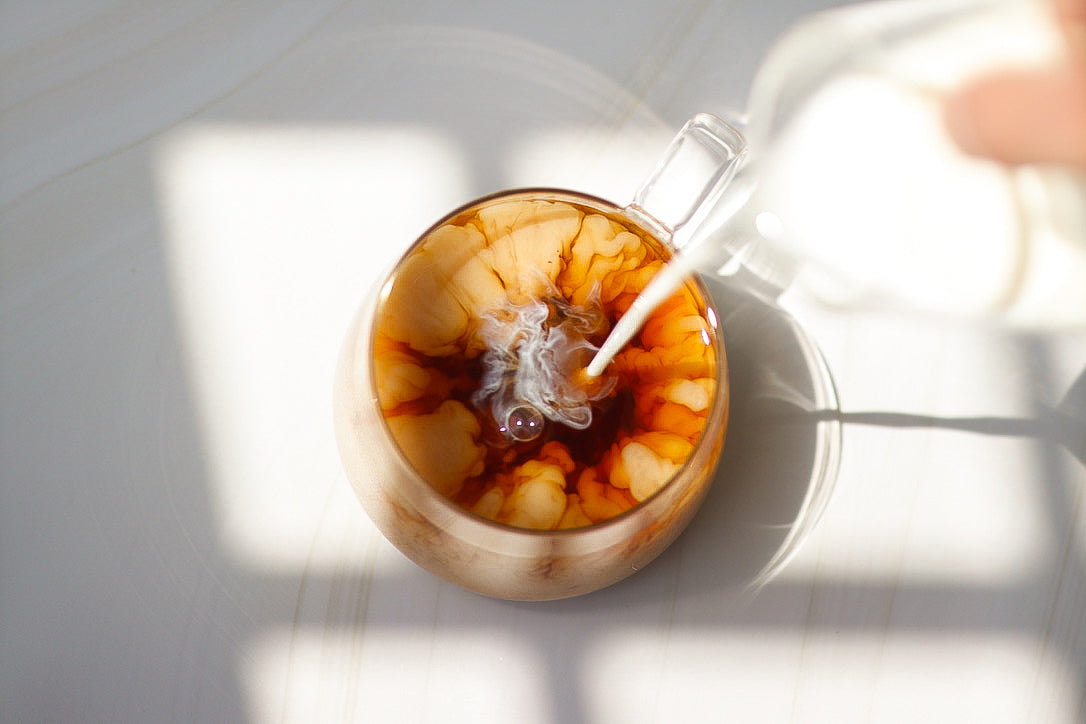
Why I Stopped Boiling Water for Every Tea: Turns out, tea doesn’t like a one-temp-fits-all approach.
|
Time to read 5 min
|
Time to read 5 min
Okay, Nicole here from Savoy Tea Co., and I've got a confession to make. For the longest time, whenever I wanted a cup of tea, I'd fill the kettle, hit the boil button, and that was that. Simple, right? I figured hotter was better – it’s tea, after all! But then, as I journeyed deeper into the world of tea (a perk of the job!), I had an epiphany: tea doesn’t like a one-temp-fits-all approach.
Turns out, I was scorching some of my more delicate friends and not giving others the oomph they needed. Learning to adjust my water temperature has been a game-changer, and I’m excited to share why I stopped boiling water for every tea.
Think of tea leaves like different types of food. You wouldn't cook a delicate fish at the same high heat for the same amount of time as a hearty stew, right? The same principle applies to tea. Different tea types – black, green, white, oolong, and pu'erh – have unique chemical compositions and sensitivities. Using water that's too hot can actually "cook" or "burn" the tender leaves, especially with more delicate varieties like green or white teas. This often results in a bitter, astringent (or even metallic) taste, masking the tea's true, nuanced flavors.
On the flip side, water that isn't hot enough for robust teas like black or pu'erh might lead to a weak, underdeveloped, and frankly, disappointing cup. The heat is essential for properly extracting all the wonderful compounds that give these teas their characteristic body, aroma, and flavor.
At Savoy Tea Co., we believe in helping everyone discover the joy of a perfect cup. That starts with understanding the tea itself. Here’s a general guide to the ideal water temperatures for different tea types, straight from our Tea Basics training:
Imagine making a delicate Japanese green tea with freshly boiled water. Instead of a sweet, slightly savory, and vibrant cup, you'll likely get a bitter, astringent brew that makes you pucker and leaves your mouth dry. All those beautiful, sophisticated notes? Gone.
Conversely, try brewing a hearty black tea with water that’s only 170∘F. You’ll probably find it tastes flat, weak, and lacking its usual briskness and depth. It’s like listening to your favorite song with the volume turned way too low – you just can’t appreciate its full power.
We're passionate about tea education because we want you to love every sip. Here’s how you can start mastering water temperatures:
Stopping the "one-temp-boil-for-all" habit has truly transformed my tea experience, and I'm excited for it to transform yours too! It’s not about being fussy or snooty; it’s about unlocking the incredible spectrum of flavors that different teas have to offer – from the delicate, sweet notes of a perfectly brewed White Bai Mu Dan to the rich, malty depths of a full-bodied Assam black. It’s about respecting the leaf and the craft that went into producing it, something that we cherish here at Savoy.
Ready to taste this incredible difference for yourself? Here’s how you can start your own flavor adventure with us today:
Explore Teas Tailored to Your Taste: Now that you're armed with temperature knowledge, dive into our collections!
Effortless Perfection with Every Order: When you choose Savoy Tea Co., you’re not just getting exceptional tea. We include the ideal brewing temperature and time for every tea right on the packaging and our website. No more guessing, just perfectly brewed cups waiting to be enjoyed. Add the teas that sound best to your cart and get ready to elevate your tea ritual!
Experience the "Aha!" Moment: Imagine that first sip where all the nuanced flavors come alive, just as the tea farmer intended. That's the joy we want to bring to your daily cup. You'll be amazed at what a little temperature adjustment, guided by our expertise, can do.
We truly believe in helping everyone fall in love with tea, and that journey often starts with understanding how to bring out its best flavor. Explore our diverse selection, put your new knowledge to the test, and embark on a flavor adventure that will delight your senses. Your perfect cup is just a click and a careful steep away.
Happy Steeping!
Nicole
Savoy Tea Co.
